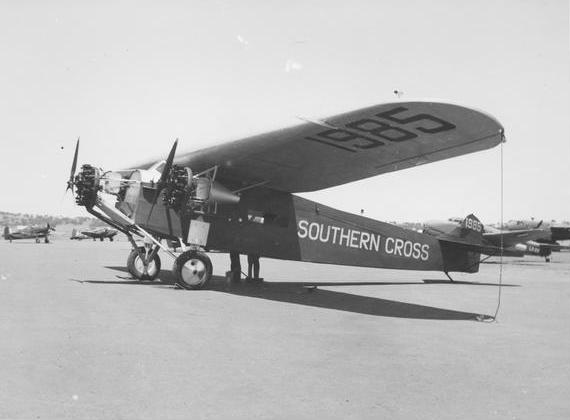But the JU-52 is probably the most famous, most recognisable and most distinctly German plane ever.
There’s not many unknown local legends.
But the JU-52 is probably the most famous, most recognisable and most distinctly German plane ever.
There’s not many unknown local legends.
Well… I mean… well.
I don’t agree.
But let’s not get into that.
In any case I never interpreted “local legends” to mean “only known locally and obscure everywhere else.” I just interpreted it as famous and influential aircraft representing the aviation history of the respective country/region.
(post deleted by author)
For Britain, the obvious choices are probably warbirds, but for the sake of civilian airplane fans like myself…
Vickers Viscount or DH Comet.
For Spain, the CASA C-212 Aviocar, the greatest success of the Spanish aeronautical industry and which is a relatively simple civil and military transport or the La Cierva autogyro, which laid the foundations for helicopters … when the flight model of rotary wing flight will be finally developed
(post deleted by author)
Fokker 50 or 27 for The Netherlands
Have they officially said they are aiming for only the 30’s-50’s time period, or is that just what some are assuming?
I never said you did. I wasnt replying to anything you’d written.
You never said I did what? My post above is a general reply to the thread and not to you. Rather flummoxed what we’re even talking about. Some people seem to be taking it for granted the LL series will all be planes from the 30s through 50s, others are suggesting planes from much later, so I’d simply like to know if there’s been any official statement on what Asobo’s vision is.
Have another read of your comment and you’ll see it quotes and responds to my post; my post wasn’t in response to anything you’d written.
Anyway let’s move on. I can’t find any trace that Microsoft / Asobo ever tied a “local legend” down to anything but a “local legend”.
The DC-3, Beechcraft 18 and DHC-2 would be good to have. Beechcraft 17 Staggerwing including its ski’s (as part of the us antartica service) and floats would be cool.
I would imagine we’ll see some of the ones that made it into Flight Simulator 2004: A Century of Flight as to make a guess on some that would get covered.
Personally I don’t think they should tread around what 3rd parties do or don’t do as the average 3rd party creator is often messy and has a hard time really getting in the features and quality of default aircraft to begin with. Plus given they’ve said they would be doing 3d scans of the aircraft (including sharing data with museums), I would hate for that not to happen just because someones thrown together a generic quality model previously and called ‘first’ on it.
Should be a case if 3rd parties want to sell their plane still, they just have to offer a better product than base quality aircraft, not simply rely on existing alone – its not a tall ask and there are makers we all know who are more than capable of that.
No, it doesn’t. There are no quotes in my post. In this post I have quoted you, see what it looks like? See how in the upper right corner of my previous post there is no little arrow or miniature version of your icon showing who it was a response to?
THAT’S the post of mine you were responding to?
Good grief.
My statement about what local legends means was not about you, it was a general comment on some other statements made in the thread that seemed to think they had to be obscure everywhere that isn’t local.
Moving on…
During the boom of aviation in the 1930’s, the need for a solid, forgiving training aircraft gave birth to de Haviland’s sweetheart, the DH.82 “Tiger Moth”.
Released to the world in 1932, the venerable Tiger Moth trained the future of the RAF. Most of the Spitfire, Hurricane and Lancaster pilots of the great Battle of Britain got their wings flying the DH.82. Following the war the number of flight schools around the world exploded and the Tiger Moth trained the next two generations of pilots. Although retired as a military trainer in the 1960s, the Tiger Moth still flies, 90 years later, as a civilian aircraft.
At 8700+ aircraft built and the number of pilots that have learned to fly in her, I would have to say the Tiger Moth would have to rank awfully high on any, “most influential, legends of the air”, list.
For Dutchland: Fokker F.VIIb.3m
In 1927, Richard E. Byrd completed his trans-Atlantic flight from New York City to Paris in the Fokker F.VII America.
In 1928, Amelia Earhart became the first woman to fly across the Atlantic as a passenger in a Fokker F.VII.
In 1928, Charles Kingsford-Smith completed the first trans-Pacific flight in another F.VII, the Southern Cross.

Or it’s successor, the F10:

The Coandă-1910, designed by Romanian inventor Henri Coandă, was an unconventional sesquiplane aircraft powered by a ducted fan. It had an experimental engine consisted of a conventional piston engine driving a multi-bladed centrifugal blower which exhausted into a duct.
I really would love to see Vickers Viscount or Comet for the UK.
And for Sweden most defenetly SAAB.
For the UK I would plump for the Scottish Aviation Twin Pioneer (AKA TwinPin) not exclusively military but there is a survivor in the RAF Museum at Cosford and possibly the Westland Lysander of which there are several around still flying . If it’s a big bird you want how about the Short Sunderland; that could count for Ireland maybe. For Canada it would be the early DHC stable in its entirety - DHC 1 Chipmunk, DHC 2 Beaver, DHC 3 Otter and the DHC 4 Caribou. - all legends across the world.